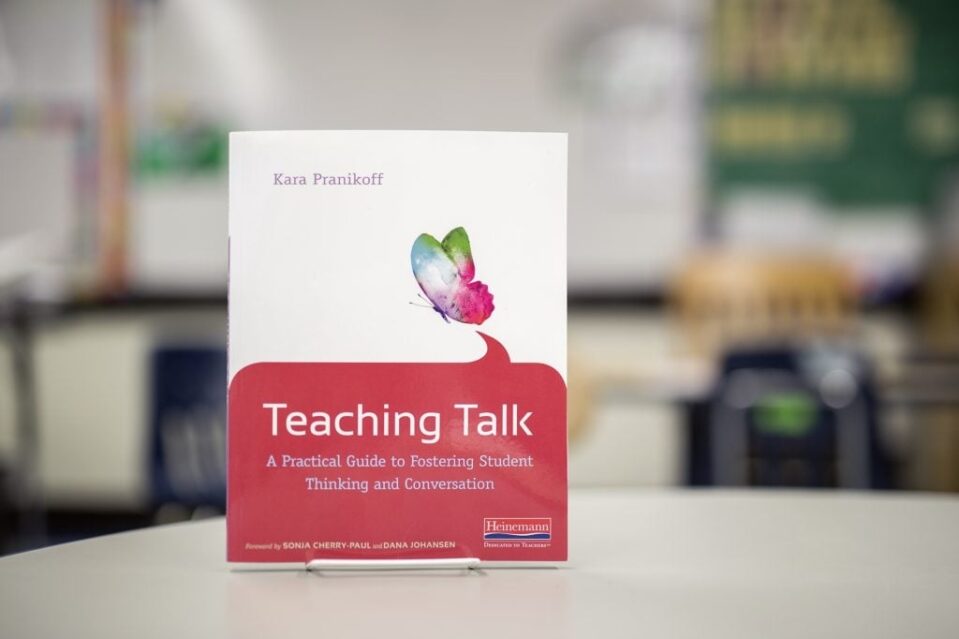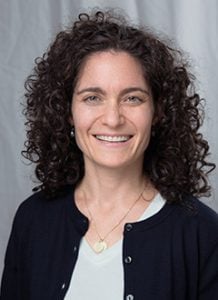
Excerpted from Teaching Talk: A Practical Guide to Fostering Student Thinking and Conversation by Kara Pranikoff
If you are interested in working on the talk in your room, the first step is to listen. All listening involves some level of bravery (it’s never easy to listen to yourself) and routine. It’s the only way to really know what is being shared and how the moves you make as a teacher are affecting student thought in your classroom. You need to find a way to save conversations and collect artifacts of your talk for assessment and reflection.
Listening and Recording
Listening and recording are not new tools for the classroom. When children are just beginning to read, running records are an invaluable way to capture exactly how a student decodes text. As a student reads, the teacher notes correct words along with miscues, pauses, and repeated phrases, and when analyzed, these notes allow you to better understand how a student approaches print. You can assess strategies the reader uses to work through tricky parts, the finesse with which they integrate their knowledge of how letters and sounds work, and their ability to use the meaning of text to attempt new or challenging words.
Once reading is fluent, the role of listening and recording during reading time might come in the form of conferring notes—a mix of thoughts a student has about a text verbatim, a record of ways you responded to those thoughts, and some indication of next steps or angles the student will use to deepen independent comprehension. In both instances, recording helps capture the moment the teacher and student share; it gives a clear picture of the student’s process navigating the words on the page and the meaning that is made. Across a year, these records show patterns, areas of growth, and the effect of instruction on reading development. These notes are an invaluable tool and necessary for a teacher to make instructional choices that best support the readers in the classroom.
Listening and recording during group instruction is invaluable for all the same reasons: Only by recording a lesson can you accurately reflect on how the discussion impacts the whole class. Like the running record, it’s imperative that large parts of the lessons are actually captured verbatim—through transcription or audio or video recording—so that you can analyze the content of the talk: the questions asked, your response to student comments, and the implicit and explicit ways ideas are encouraged to gather steam or guide the thinkers in the room to come to conclusions about the content they are reading.
Conferring Notes
Conferring notes are the data we use to analyze how a reader is making sense of text and to inform instructional choices. Similarly, a transcript of the larger group talk is the data we use to review and make decisions about next steps for the entire class. These transcripts are used both by the teacher alone and collaboratively with the whole group to assess and reflect on the talk that is happening in a classroom: What ideas were shared and took hold? What are the group and individual understandings of the content? What are the patterns of conversation in the classroom? Who is speaking, and who is quiet? How is the class using the tide of conversation to build understanding of the content?
The analysis should always inform instructional plans, either to deepen conversational knowledge—what the students know about their role as speakers and listeners in a conversation—or to deepen the content knowledge—what the classroom thinks about the information that has been presented. Both aspects of classroom talk need to be addressed and taught so students can use conversations to their greatest potential.
 Conversation seeker and careful listener, Kara Pranikoff is fortunate to spend her days learning with children and teachers. Currently a literacy coach, you can find Kara at PS 234, a progressive, inquiry-based school in NYC where she works alongside teachers to strengthen their reading and writing instruction. Kara has been a classroom teacher in NYC and at a Title 1 school in Buffalo, NY. She has taught small groups of students in reading intervention, co-led a series of workshops for instructional coaches in her district, and has been a literacy consultant for schools outside of the city. She speaks at national conferences about the ways teachers can foster productive, dynamic, and independent student discussions.
Conversation seeker and careful listener, Kara Pranikoff is fortunate to spend her days learning with children and teachers. Currently a literacy coach, you can find Kara at PS 234, a progressive, inquiry-based school in NYC where she works alongside teachers to strengthen their reading and writing instruction. Kara has been a classroom teacher in NYC and at a Title 1 school in Buffalo, NY. She has taught small groups of students in reading intervention, co-led a series of workshops for instructional coaches in her district, and has been a literacy consultant for schools outside of the city. She speaks at national conferences about the ways teachers can foster productive, dynamic, and independent student discussions.



